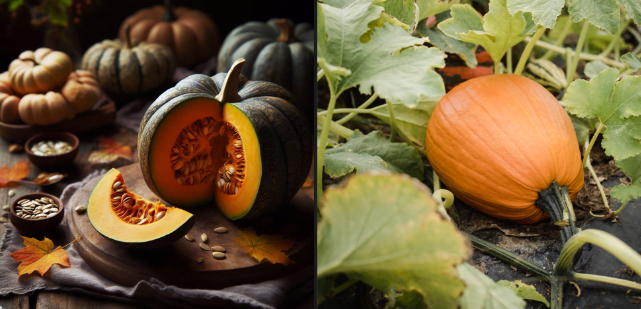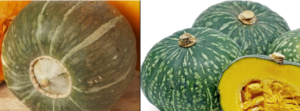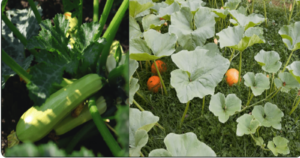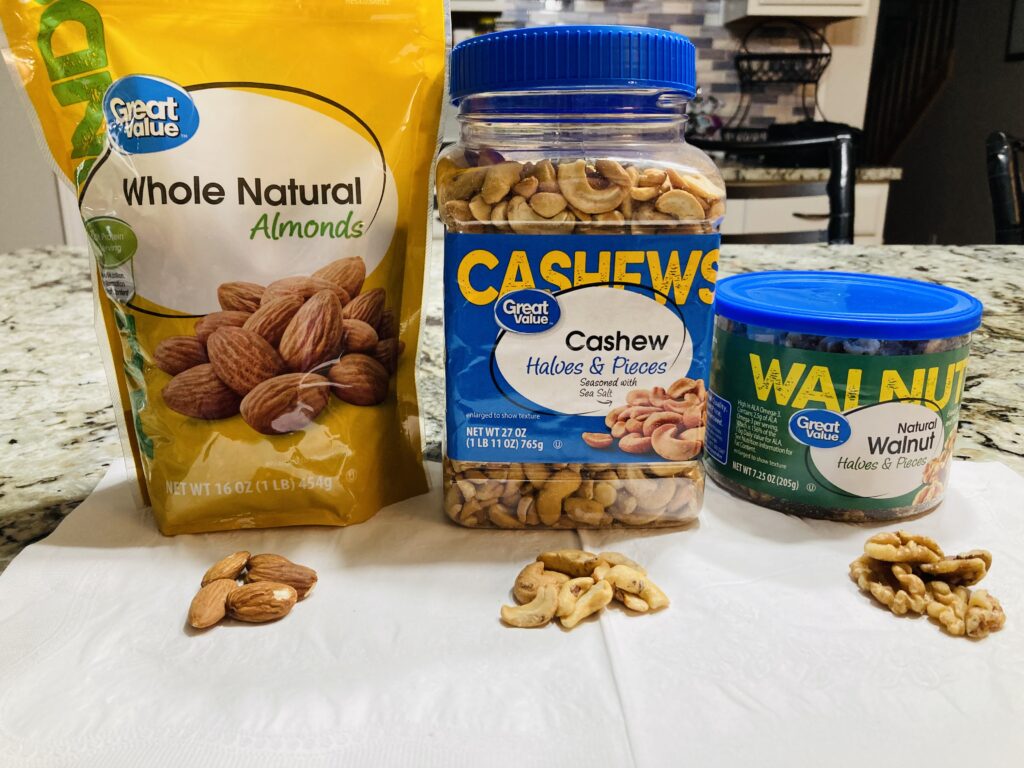Kabocha is a small, round winter squash with dark green skin, known for its sweet, dense flesh. Pumpkin, on the other hand, comes in various sizes and colors, with a milder flavor and grainier texture. As the leaves change color and a crisp chill fills the air, it’s time for nature’s harvest to take center stage.
Among the seasonal stars, Kabocha and Pumpkin stand out as quintessential autumn gourds. In this article, we embark on a culinary adventure to explore the distinctive characteristics, flavors, and culinary applications of these two beloved members of the gourd family.
Kabocha and pumpkin are both types of winter squash, belonging to the same gourd family, Cucurbitaceae . Kabocha is also called squash or Japanese pumpkin in North America .They are popular vegetables in various cuisines around the world. Kabocha popular in Asian cuisine and is rich in beta-carotene and vitamins.. pumpkin widely used in Western cooking, especially in pies and soups, and is also a good source of nutrients.

What is Kabocha?
Kabocha is hard on the outside with knobbly-looking skin, resembling a stout pumpkin. Its skin, a deep shade of green with occasional celadon-to-white stripes, contrasts vividly with the intense yellow-orange hue of its flesh. While it shares many characteristics with the buttercup squash, it lacks the distinctive raised cup at the blossom end. Typically, a kabocha weighs between two to three pounds, though larger specimens can tip the scales at an impressive eight pounds.
When freshly harvested, the kabocha is still in the process of growing. This sets it apart from other vegetables and fruits, as immediate freshness is not the top priority.
To unlock its full flavor potential, it must undergo a maturation process. Initially, the kabocha should be ripened in a warm environment (around 77 °F/25 °C) for approximately 13 days. This period facilitates the conversion of some starches into sugars. Following this, the kabocha is moved to a cooler place (around 50 °F/10 °C) and stored for roughly a month, a step crucial for enhancing its carbohydrate content.
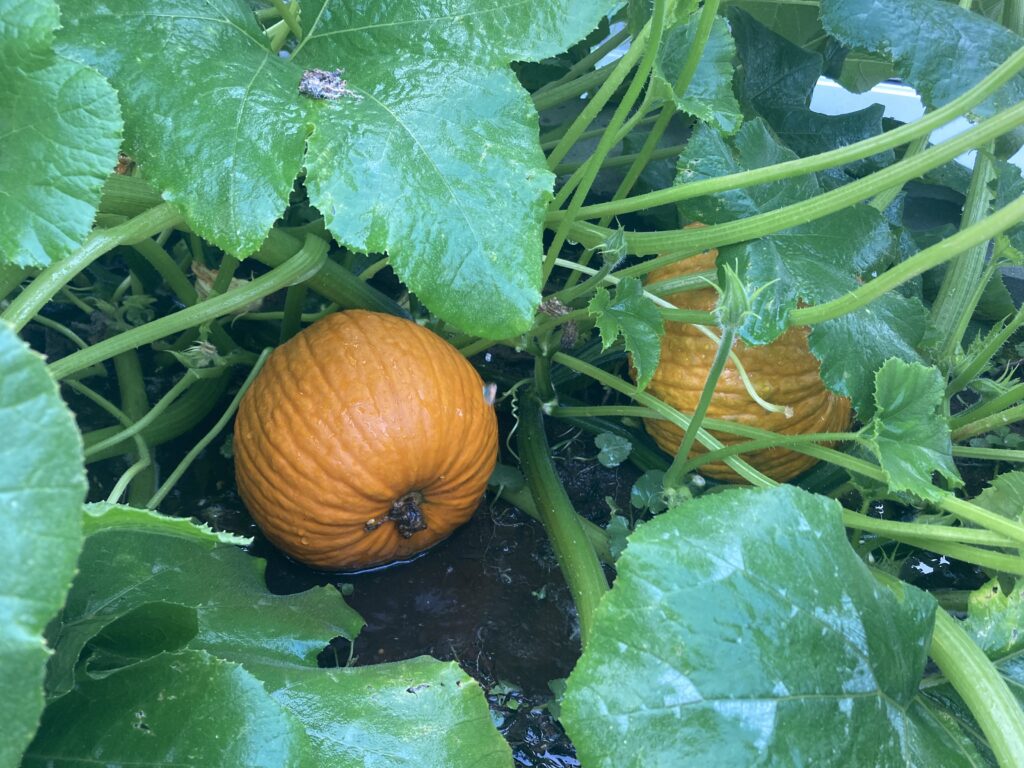
This deliberate process yields a remarkable transformation. The initially dry and somewhat bland-tasting kabocha metamorphoses into a velvety, sweet delight. A fully ripened kabocha boasts reddish-yellow flesh, a sturdy skin, and a stem that has taken on a dry, cork-like texture. It reaches the pinnacle of ripeness approximately 1.5 to 3 months after being harvested.
Health benefits of kabocha squash
| Health Benefit | Description |
|---|---|
| Rich in Nutrients | Kabocha squash is packed with vitamins and minerals, including vitamin A, vitamin C, vitamin E, potassium, and manganese. |
| High in Fiber | It contains a good amount of dietary fiber, which aids in digestion, promotes gut health, and helps in weight management. |
| Low in Calories | Despite its sweetness, kabocha squash is relatively low in calories, making it a great option for those watching their calorie intake. |
| Antioxidant Properties | Kabocha squash is rich in antioxidants like beta-carotene, which helps protect cells from damage caused by free radicals. |
| Blood Sugar Regulation | The fiber and antioxidants in kabocha squash may help regulate blood sugar levels, making it beneficial for those with diabetes or at risk of developing it. |
| Immune Support | Its high vitamin C content supports the immune system, helping the body defend against infections and illnesses. |
| Heart Health | Potassium found in kabocha squash helps regulate blood pressure and supports heart health. Additionally, its fiber content can help lower cholesterol levels. |
| Eye Health | The beta-carotene in kabocha squash is converted to vitamin A in the body, which is essential for maintaining good vision and eye health. |
| Skin Health | The combination of vitamins A, C, and E, along with antioxidants, promotes healthy skin by protecting against damage from UV radiation and environmental pollutants. |
Origin and History of Kabocha and Pumpkin
Kabocha
1. Origins in Asia: Kabocha, also known as Japanese pumpkin, is believed to have originated in Asia. It is thought to have been cultivated in Japan for over 400 years.
2. Japanese Cultivation: The kabocha has played a significant role in Japanese cuisine and culture. It was introduced to Japan via Portuguese traders in the 16th century. Since then, it has been selectively bred and adapted to suit Japanese tastes.
3. Varieties: There are several varieties of kabocha, with variations in shape, size, and color. They can range from dark green to reddish-brown, and their flesh is typically bright orange.
4. Culinary Uses: Kabocha is a versatile ingredient used in various culinary applications. It can be roasted, steamed, boiled, or even used in soups and stews. Its sweet, dense flesh makes it a popular choice in both savory and sweet dishes.
5. Nutritional Benefits: Kabocha is rich in nutrients like beta-carotene, vitamin C, and dietary fiber. It’s also low in calories, making it a healthy addition to many diets.
Pumpkin
1. Ancient American Origins: Pumpkin, on the other hand, has much older origins in the Americas. It is believed to have been domesticated in Mesoamerica over 7,000 years ago.
2. Native American Cultivation: Native American tribes were among the first to cultivate and utilize pumpkins. They played a significant role in their diets.
3. European Introduction: Similar to kabocha, pumpkins were introduced to Europe by early explorers, most notably Christopher Columbus, who brought them back to Europe from the New World.
4. Global Adoption: Pumpkins quickly spread around the world and became an integral part of various cuisines. They are used in everything from soups and pies to roasts and stews.
5. Symbolism and Tradition: In addition to its culinary uses, the pumpkin has cultural significance, particularly in North America. It’s closely associated with holidays like Halloween and Thanksgiving.
6. Nutritional Benefits: Like kabocha, pumpkins are a rich source of vitamins and minerals, including vitamin A, vitamin C, potassium, and dietary fiber.
Cultural significance and traditional uses of Kabocha and Pumpkin in various societies.
Kabocha
In Japan, kabocha is considered a culinary staple and is utilized in a diverse array of dishes. It is a key ingredient in preparations like tempura, stews, and nimono (simmered dishes).
Furthermore, it even features in desserts such as kabocha mochi. Beyond its culinary applications, kabocha holds festive symbolism in Japanese culture.
It is often associated with celebrations and plays a central role in seasonal dishes for events like Osechi Ryori (New Year’s meal) and Tsukimi (moon-viewing) during autumn. Additionally, kabocha is valued for its nutrient-rich properties, contributing to its association with health and longevity.
In Korean cuisine, kabocha takes on a role as a versatile ingredient, often featuring as a banchan or side dish. It can be prepared in various ways, including steamed or mashed, and is typically served alongside rice.
In Southeast Asian countries, kabocha’s versatility shines through in its use across both savory and sweet dishes. It is a common addition to curries, soups, and even desserts like Thai pumpkin custard. This adaptability makes kabocha a popular and cherished ingredient in the region’s vibrant culinary landscape.
Pumpkin
In North America, pumpkin holds cultural significance in two main ways, during American Thanksgiving, it is commonly used to make the iconic pumpkin pie, and during Halloween, carved pumpkins, known as jack-o-lanterns, are a central decoration.
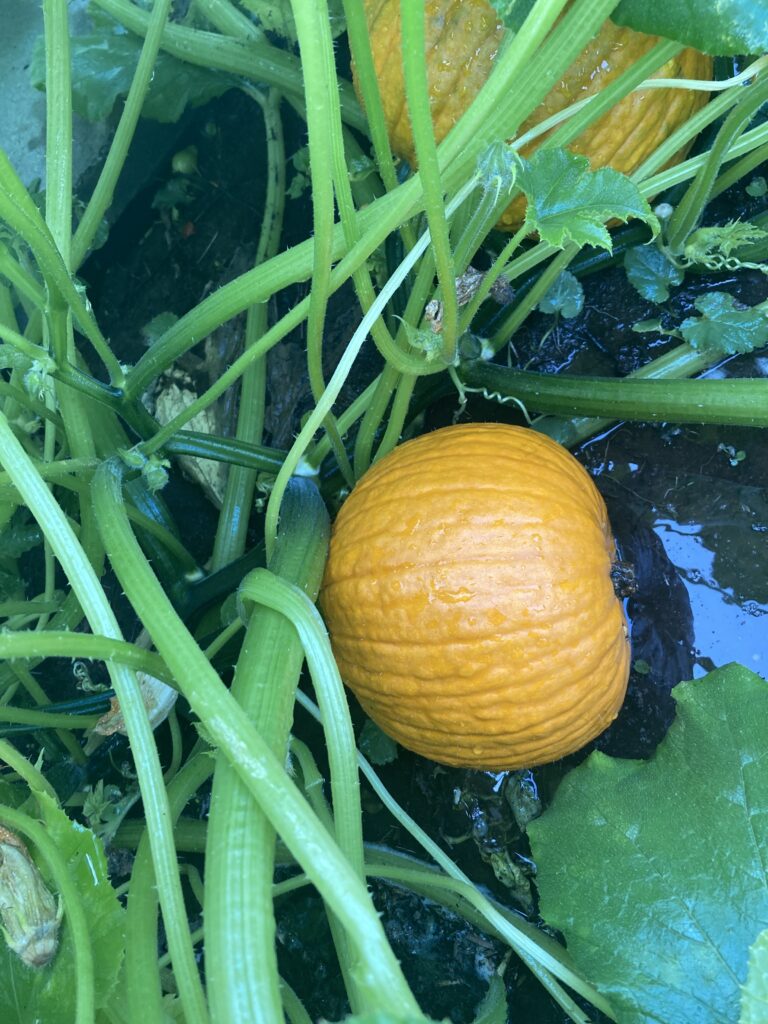
In Mexico, pumpkins play a significant role in the Day of the Dead celebrations. They are used to prepare traditional dishes like calabaza en tacha, a candied pumpkin dish.
In Europe, particularly in the UK, pumpkins are a versatile ingredient. They are used in a variety of dishes including soups, pies, and roasted as a side dish, with pumpkin-based recipes being especially popular during the autumn months.
In India, pumpkins find their way into a variety of culinary creations. They are commonly used in dishes like pumpkin curry (kaddu ki sabzi) and various sweets such as pumpkin halwa.
In Central and South America, pumpkins are a staple ingredient in traditional recipes. They are used in soups, stews, and desserts. Additionally, the seeds are often toasted and consumed as a snack.
Across these regions, pumpkins serve as a versatile and cherished ingredient, being used in a wide range of savory and sweet dishes. They are associated with various cultural celebrations and traditions, highlighting their importance in global culinary heritage.
Similarities and Differences of Kabocha (Japanese Pumpkin) vs Pumpkin
Both kabocha and pumpkin belong to the gourd family, Cucurbitaceae, and they share a similar nutritional profile. However, their distinct flavors, textures, and culinary applications make them unique ingredients in their respective cuisines.
Similarities:
Family: Both kabocha and pumpkin belong to the Cucurbitaceae family, which includes various types of squash and gourds.
Nutritional Content: Kabocha and pumpkin are both nutritious and rich in vitamins and minerals. They are low in calories and fat, high in fiber, and contain nutrients like vitamin A, vitamin C, and potassium.
Versatility: Both kabocha and pumpkin can be used in a variety of culinary applications, including soups, stews, pies, and side dishes. They can be roasted, steamed, mashed, or pureed.
Differences:
- Appearance: One of the most noticeable differences is in their appearance. Kabocha has a dark green, bumpy skin with a vibrant orange flesh, while pumpkins typically have a lighter, smoother skin and orange flesh. The shape of the two can also differ, with kabocha being more squat and round.
- Flavor and Texture: Kabocha tends to have a sweeter taste and a dense, dry, and flaky texture, making it suitable for both savory and sweet dishes. Pumpkins, on the other hand, have a milder flavor and a softer, more fibrous texture.
- Origin: Kabocha is native to Japan, and it is commonly used in Japanese cuisine. Pumpkins have a more global distribution and are widely used in various cuisines around the world.
- Culinary Use: While both can be used in similar dishes, the culinary traditions often dictate their use. Kabocha is commonly used in Japanese dishes like tempura or nimono (simmered dishes), while pumpkins are frequently used in Western dishes like pumpkin pie or pumpkin soup.
- Nutrient Composition: While both are nutritious, there may be some differences in nutrient composition. The specific varieties and growing conditions can influence the exact nutritional content, but in general, they offer similar health benefits.
| Kabocha | Pumpkins |
|---|---|
| Dark green, bumpy skin; vibrant orange flesh | Lighter, smoother skin; orange flesh |
| Sweeter taste; dense, dry, flaky texture | Milder flavor; softer, more fibrous texture |
| Native to Japan; used in Japanese cuisine | Global distribution; used worldwide |
| Common in Japanese dishes (tempura, nimono) | Frequently used in Western dishes (pumpkin pie, soup) |
| Nutritious; variations based on varieties and growing conditions | Nutritious; variations based on varieties and growing condition |
Key Physical characteristics of Kabocha vs pumpkin
Kabocha:
- Skin Texture: Kabocha squash has a rough, bumpy skin. The texture is often described as knobby or warty.
- Color: The skin of a kabocha squash can range from dark green to a more muted gray-green. Sometimes, it may have patches of lighter or yellowish coloration.
- Shape: Kabocha squash is typically squat and round, resembling a flattened pumpkin. It has a thick, sturdy stem.
Pumpkin:
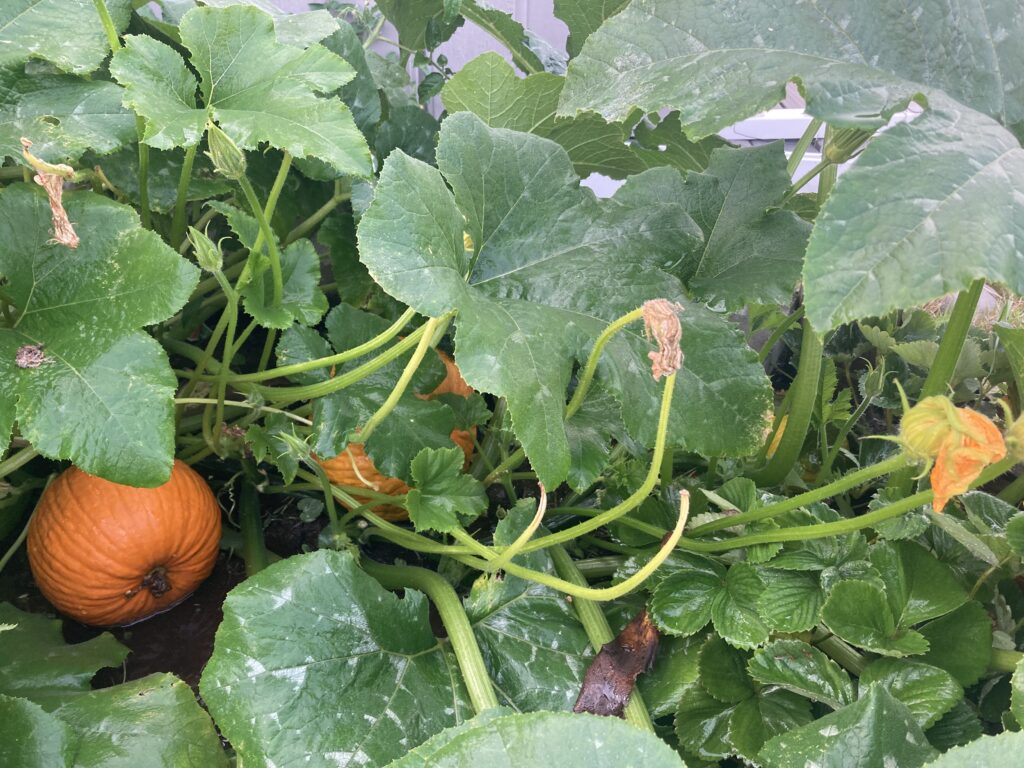
- Skin Texture: Pumpkins generally have a smoother skin compared to kabocha. While some varieties might have slight ridges, they lack the pronounced bumps of a kabocha.
- Color: Pumpkins come in a wider range of colors. They can be deep orange, but they can also be yellow, green, red, or even a combination of these hues.
- Shape: Pumpkins are more variable in shape. They can be round, squat, tall, or even elongated. The stem can be thick or slender, depending on the variety.
Types & Variety Kabocha and Pumpkin
Kabocha:
- Green Kabocha: This is the most common type of kabocha, with dark green skin and vibrant orange flesh. It’s sweet and often used in various Asian cuisines.
- Red Kabocha: This variety has a reddish tint to its skin. It’s less common than the green type but has a similar taste.
- Grey Kabocha: As the name suggests, this type has a grayish skin, sometimes with patches of green. It’s less sweet than the green variety.
Pumpkin:
- Jack-o’-Lantern Pumpkin: These are the classic large, round, and bright orange pumpkins often associated with Halloween. They’re great for carving and less commonly used for culinary purposes.
- Sugar Pumpkins: Also known as pie pumpkins, these are smaller, sweeter, and easier to handle. They are commonly used for making pumpkin puree for baking.
- Cinderella Pumpkin: This variety has a deeply ridged, squat shape and a vibrant reddish-orange color. It’s often used for decorative purposes but can also be eaten.
Remember, within each category (kabocha and pumpkin), there are many cultivars and regional variations, so individual specimens may exhibit slight differences in texture, color, and shape. Additionally, both kabocha and pumpkin can have variations in flavor and texture based on factors like ripeness and growing conditions.
Taste Flavor of Kabocha vs Pumpkin
The flavor profile of kabocha and pumpkin is influenced by various factors, including their inherent characteristics and how they are prepared. Let’s break down how different cooking methods can affect their taste:
| Kabocha flavor | Pumpkin flavor |
| Roasting: Enhances natural sweetness and nuttiness, caramelizing sugars for a richer flavor. Boiling: Mellows sweetness and nuttiness, resulting in a softer texture. Steaming: Preserves natural flavors, maintaining sweetness and nuttiness. Sautéing/Stir-Frying: Develops a sweeter, caramelized exterior with a nutty undertone. Grilling: Intensifies sweetness with a smoky flavor, complementing nuttiness. Frying: Creates a crispy exterior with concentrated sweetness, potentially accentuating nuttiness. | Roasting: Enhances natural sweetness, with a milder and less nutty flavor compared to kabocha. Boiling: Softens texture and subtly enhances sweetness, with less nuttiness Steaming: Preserves mild sweetness with a subtle nutty undertone. Sautéing/Stir-Frying: Enhances sweetness, but nuttiness may not be as pronounced as kabocha. Grilling: Intensifies sweetness, but may not develop as much nuttiness as kabocha. Frying: Brings out sweetness, but may not develop the same level of nuttiness as kabocha. |
Nutritional content of Kabocha vs Pumpkin
Both kabocha and pumpkin are excellent sources of vitamin A, which is important for vision, immune function, and skin health.
They are also relatively low in calories and fat, making them a healthy addition to a balanced diet. Additionally, they provide a variety of vitamins and minerals that are important for overall health.
Keep in mind that the nutritional content can vary slightly depending on factors such as the specific variety of kabocha or pumpkin and how it’s prepared.
| Kabocha | Pumpkin |
| Calories: Approximately 40 calories Carbohydrates: About 9 grams Dietary Fiber: Around 1.5 grams Sugars: About 2.6 grams Protein: Approximately 1 gram Fat: About 0.1 grams Vitamin A: Very high, providing more than the daily recommended intake Vitamin C: Moderate, providing about 12% of the daily recommended intake Vitamin E: Low, providing about 6% of the daily recommended intake Vitamin B6: Moderate, providing about 10% of the daily recommended intake Folate (B9): Moderate, providing about 9% of the daily recommended intake Potassium: High, providing about 12% of the daily recommended intake Magnesium: Moderate, providing about 8% of the daily recommended intake Iron: Low, providing about 4% of the daily recommended intake | Calories: Approximately 26 calories Carbohydrates: About 6.5 grams Dietary Fiber: Around 0.5 grams Sugars: About 2.8 grams Protein: Approximately 1 gram Fat: About 0.1 grams Vitamin A: Extremely high, providing more than the daily recommended intake Vitamin C: Moderate, providing about 9% of the daily recommended intake Vitamin E: Low, providing about 6% of the daily recommended intake Vitamin B6: Low, providing about 5% of the daily recommended intake Folate (B9): Low, providing about 2% of the daily recommended intake Potassium: Moderate, providing about 5% of the daily recommended intake Magnesium: Low, providing about 2% of the daily recommended intake Iron: Low, providing about 2% of the daily recommended intake |
9 Simple Cooking techniques for Kabocha and Pumpkin
Kabocha and pumpkin are both delicious and versatile ingredients that can be prepared in various ways. Here are some cooking techniques you can use for both:
1. Roasting:
- Preheat your oven to around 375°F (190°C).
- Cut the kabocha or pumpkin into manageable pieces, remove the seeds, and peel if desired.
- Toss the pieces with a bit of oil, salt, and any desired seasonings (like cinnamon, nutmeg, or herbs).
- Place them on a baking sheet in a single layer.
- Roast until they are tender and slightly caramelized, which usually takes around 30-45 minutes.
2. Steaming:
- Cut the kabocha or pumpkin into chunks or slices, removing the seeds and skin if desired.
- Place them in a steamer basket over boiling water.
- Steam until tender, which can take around 15-25 minutes depending on the size and thickness of the pieces.
3. Boiling:
- Cut the kabocha or pumpkin into chunks or cubes and remove the seeds.
- Place them in a pot with enough water to cover them.
- Bring the water to a boil, then reduce to a simmer and cook until tender, usually around 15-20 minutes.
4. Mashing:
- After boiling or steaming, mash the cooked kabocha or pumpkin with a fork, potato masher, or in a food processor.
- You can add butter, cream, spices, or sweeteners (like brown sugar or maple syrup) for flavor.
5. Sautéing:
- Cut the kabocha or pumpkin into small cubes.
- Heat some oil or butter in a pan over medium heat.
- Add the cubes and cook until they’re golden brown and tender, which typically takes about 10-15 minutes.
6. Pureeing:
- Roast, steam, or boil the kabocha or pumpkin until they’re very soft.
- Remove any skins or tough parts.
- Blend the cooked pieces in a food processor or blender until smooth. You can add liquid (like broth, milk, or cream) if needed.
7. Stuffing:
- Cut the top off the pumpkin or kabocha and remove the seeds and pulp.
- Fill it with a mixture of grains, vegetables, and/or meat.
- Place it in the oven and bake until the pumpkin or kabocha is tender and the stuffing is cooked through.
8. Frying:
- Cut the kabocha or pumpkin into thin slices or small cubes.
- Heat oil in a pan or deep fryer.
- Fry the pieces until they’re golden and crispy.
9. Grilling:
- Cut the kabocha or pumpkin into slices or wedges, leaving the skin on.
- Brush with oil and season with salt and pepper.
- Grill until they have nice grill marks and are tender, which usually takes about 5-7 minutes per side.
Remember, the specific cooking time can vary based on the size, type, and freshness of the kabocha or pumpkin, so it’s always a good idea to check for doneness periodically while cooking.


5 Easy ways in which you can use Kabocha and Pumpkin in your cooking
Kabocha:
- Roasting: Kabocha has a sweet, nutty flavor and a dense, dry flesh. It’s excellent for roasting. Cut it into chunks, toss with some olive oil, salt, and pepper, and roast until tender. You can use roasted kabocha in salads, soups, or as a side dish.
- Soup: Kabocha soup is a popular dish. Cooked kabocha, along with ingredients like onions, garlic, and broth, can be blended to make a creamy, flavorful soup. You can add spices like ginger or nutmeg for extra depth of flavor.
- Stir-frying: Cubes of kabocha can be stir-fried with other vegetables and proteins. Its slightly sweet taste pairs well with soy sauce and ginger, making it a great addition to Asian-inspired dishes.
- Mashing: Boiled or steamed kabocha can be mashed and used as a base for dishes, similar to mashed potatoes. It’s a healthier alternative and adds a unique flavor.
- Baking: Kabocha can be used in baking, too. You can incorporate it into muffins, bread, or even pies for a distinctive twist.
Pumpkin:
- Pumpkin Pie: This is perhaps the most iconic use of pumpkin. The sweet, creamy flesh of pumpkin is seasoned with spices like cinnamon, nutmeg, and cloves, then baked into a pie.
- Soups and Stews: Pumpkin can be used as the base for various soups and stews. Its natural sweetness pairs well with savory flavors.
- Curries: Pumpkin can be added to curries for its creamy texture and mild sweetness. It absorbs flavors well, making it a great addition to spicy dishes.
- Baking: Just like kabocha, pumpkin can be used in baking. You can make pumpkin bread, muffins, pancakes, and even cookies.
- Pumpkin Seeds: Don’t forget about the seeds! They can be roasted with salt and spices for a crunchy, nutritious snack.
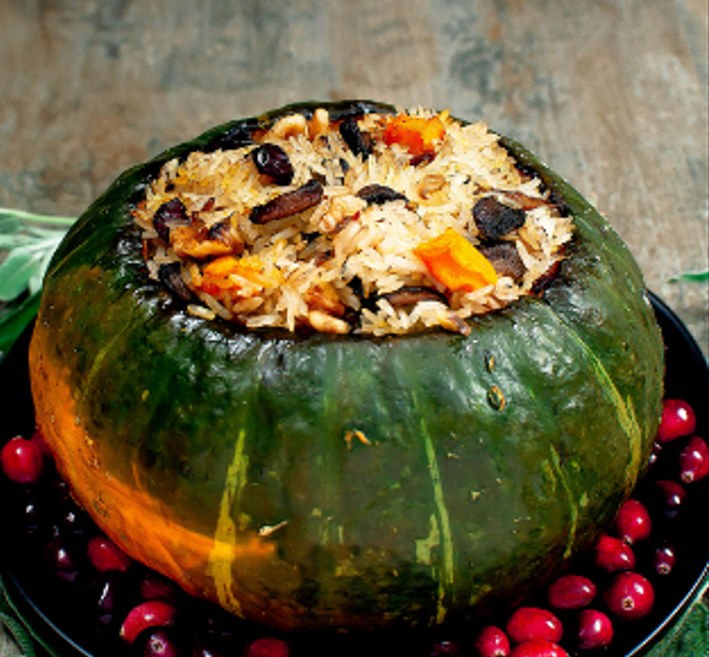
Remember, both kabocha and pumpkin can be used interchangeably in many recipes. However, keep in mind that they do have subtle differences in flavor and texture, so the end result may vary slightly. Experimenting with these ingredients in your kitchen can lead to some wonderful culinary creations.
Storage and preservation tips for Kabocha vs Pumpkin
| Kabocha (Japanese Pumpkin) | Pumpkin |
|---|---|
| Storage Temperature-Store in a cool, dry place, preferably around 50-55°F (10-13°C). Avoid refrigeration as it can cause the squash to deteriorate quickly. | Storage TemperatureStore in a cool, dry place, preferably around 50-55°F (10-13°C). Avoid refrigeration as it can cause the pumpkin to deteriorate quickly. |
| Storage Humidity-Keep humidity levels low, around 50-70%. Excessive moisture can lead to mold growth and spoilage. | Storage Humidity-Keep humidity levels low, around 50-70%. Excessive moisture can lead to mold growth and spoilage. |
| Storage Duration-Can be stored for several weeks to a few months if kept in optimal conditions. Check regularly for any signs of softening, mold, or decay. | Storage Duration-Can be stored for several weeks to a few months if kept in optimal conditions. Check regularly for any signs of softening, mold, or decay. |
| Handling-Handle with care to avoid bruising or puncturing the skin, which can accelerate spoilage. | Handling-Handle with care to avoid bruising or puncturing the skin, which can accelerate spoilage. |
| Cleaning-Wash the outer surface with water and a mild detergent if necessary. Dry thoroughly before storing to prevent moisture buildup. | Cleaning-Wash the outer surface with water and a mild detergent if necessary. Dry thoroughly before storing to prevent moisture buildup. |
| Cut Pieces-Once cut, wrap the exposed flesh tightly in plastic wrap or store in an airtight container in the refrigerator. Use within a few days for best quality. | Cut Pieces-Once cut, wrap the exposed flesh tightly in plastic wrap or store in an airtight container in the refrigerator. Use within a few days for best quality. |
| Freezing-Kabocha can be cooked and pureed before freezing for longer storage. Freeze in airtight containers or freezer bags for up to 6-8 months. | Freezing-Pumpkin can be cooked and pureed before freezing for longer storage. Freeze in airtight containers or freezer bags for up to 6-8 months. |
| Preservation Methods-Consider preserving Kabocha through methods like pickling, canning, or dehydrating to extend its shelf life and enjoy it in various forms throughout the year. | Preservation Methods-Consider preserving Pumpkin through methods like pickling, canning, or dehydrating to extend its shelf life and enjoy it in various forms throughout the year. |
10 Festive and Seasonal Appeal for Kabocha and Pumpkin
Kabocha and pumpkin are both incredibly versatile ingredients that can add a delightful festive and seasonal touch to your dishes. Here’s how you can highlight their appeal:
- Vibrant Fall Colors: Kabocha and pumpkins boast rich, deep orange hues that perfectly capture the essence of autumn. Incorporating these ingredients into your recipes instantly brings a warm and inviting visual appeal to your table.
- Iconic Autumn Flavors: The sweet, nutty, and slightly earthy flavors of kabocha and pumpkin are synonymous with fall. Their unique taste profiles evoke a sense of comfort and nostalgia, making them perfect for creating dishes that resonate with the season.
- Harvest Bounty: Kabocha and pumpkins are classic symbols of the fall harvest. Using them in your cooking celebrates the abundance of the season and connects you to the natural rhythms of the earth.
- Seasonal Tradition: For many, fall is a time for cherished traditions, such as pumpkin carving, pumpkin patches, and Thanksgiving feasts. By incorporating kabocha and pumpkin into your recipes, you’re tapping into a shared cultural experience that can evoke feelings of nostalgia and unity.

5. Versatility for Festive Feasts: Both kabocha and pumpkin can be prepared in a multitude of ways, making them ideal for creating diverse and impressive dishes for festive occasions. From soups and stews to pies, tarts, and even beverages, the possibilities are endless.
6. Nutritional Benefits: Kabocha and pumpkin are rich in essential nutrients like vitamin A, fiber, and antioxidants. Highlighting their nutritional value not only enhances the health-conscious appeal of your dishes but also aligns with the idea of nourishment during the fall season.
7. Creative Presentation: The unique shapes and sizes of kabocha and pumpkins offer endless opportunities for creative presentation. Hollowed-out pumpkins can serve as natural bowls, and kabocha can be stuffed for an eye-catching centerpiece.
8. Pairing with Seasonal Ingredients: Kabocha and pumpkin pair beautifully with other seasonal ingredients like apples, cranberries, sage, cinnamon, and nutmeg. These complementary flavors enhance the overall festive experience of your dishes.
9. Warm and Cozy Atmosphere: Cooking with kabocha and pumpkin fills your kitchen with the inviting scents of fall spices. The aroma of baking or roasting these ingredients creates a cozy, welcoming atmosphere that’s perfect for gatherings with loved ones.
10. Cultural Significance: Kabocha and pumpkin hold cultural significance in many parts of the world, especially during autumn festivals and holidays. By incorporating these ingredients, you’re embracing and celebrating diverse culinary traditions.
Incorporating kabocha and pumpkin into your fall recipes not only adds a festive touch but also allows you to fully immerse yourself in the beauty and flavors of the season. Whether you’re hosting a gathering or simply enjoying a cozy meal at home, these ingredients are sure to enhance the autumn experience.

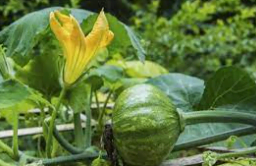
Positives and Negatives Environmental Impact of Kabocha and Pumpkin
| Positive Environmental Impacts: | Negative Environmental Impacts: |
Carbon Sequestration: Both kabocha and pumpkin plants are C3 photosynthesizes, which means they are relatively efficient at capturing carbon dioxide from the atmosphere. This helps mitigate the effects of greenhouse gas emissions. Crop Rotation: Growing kabocha and pumpkins in crop rotation systems can help improve soil health and reduce the risk of soil-borne diseases. This practice can lead to more sustainable agriculture. Reduced Chemical Input: Kabocha and pumpkins are typically hardy plants and can often be grown with fewer synthetic fertilizers and pesticides compared to more sensitive crops. Biodiversity Support: When grown in diverse, agroecological systems, kabocha and pumpkins can contribute to habitat diversity, providing food and shelter for a variety of insects and small animals. Organic Matter and Soil Health: After harvest, leftover plant material can be incorporated back into the soil, increasing organic matter content. This enhances soil structure, water-holding capacity, and nutrient availability. | Resource Intensity: Like many crops, kabocha and pumpkins require resources such as water, land, and energy for production. In some regions, water use for irrigation can be a concern, particularly in drier climates. Transportation and Distribution: If kabocha and pumpkins are transported long distances, especially by fossil fuel-dependent methods, this can contribute to greenhouse gas emissions. Mono-Cropping Risks: When grown in monoculture systems (where a single crop is grown over a large area), kabocha and pumpkins can be susceptible to pests and diseases, which may lead to increased pesticide use. Fertilizer Use: Depending on the agricultural practices used, nitrogen-based fertilizers can contribute to greenhouse gas emissions and water pollution if not managed properly. Waste and Packaging: The processing and packaging of kabocha and pumpkins can generate waste, including plastic packaging and food scraps. Proper disposal and recycling practices are important. Land Conversion: In regions where there is high demand for these crops, there may be pressure to convert natural ecosystems, such as forests or grasslands, into agricultural land. |
9 Easy tips on Growing and Harvesting Kabocha vs Pumpkin
Growing and harvesting kabocha and pumpkin can be a rewarding experience. Here are some steps to help you successfully grow and harvest these popular squash varieties
Growing Kabocha:

1. Choose the Right Location:
- Kabocha plants thrive in warm climates with full sun exposure.
- Ensure well-draining soil with a pH level of 6.0 to 6.8.
2. Planting:
- Start seeds indoors 3-4 weeks before the last expected frost date. Transplant them when they have at least two true leaves.
- Alternatively, you can sow seeds directly into the ground after the last frost.
3. Spacing:
- Allow about 3-4 feet between each plant to provide ample space for growth.
4. Watering:
- Provide consistent watering, especially during dry spells. Aim for deep, infrequent watering to encourage deep root growth.
5. Fertilizing:
- Use a balanced, all-purpose fertilizer when planting and then a low-nitrogen fertilizer as the plants mature.
6. Mulching:
- Apply mulch around the base of the plants to retain moisture and suppress weeds.
7. Pruning:
- Trim away any dead or diseased leaves to promote air circulation and prevent disease.
8. Pest and Disease Control:
- Keep an eye out for common pests like aphids, squash bugs, and powdery mildew. Use organic pest control methods when needed.
9. Harvesting:
- Kabocha is ready to harvest when the skin has hardened and turned a deep, solid color (usually dark green or orange, depending on the variety). The stem should also have dried and shriveled.
- Use a sharp knife to cut the fruit from the vine, leaving a few inches of stem attached.
Growing Pumpkins:

1. Select a Suitable Location:
- Pumpkins also prefer full sun and well-draining soil. They need a lot of space to spread out.
2. Planting:
- Sow pumpkin seeds directly into the ground after the last frost date. Plant them about 1 inch deep.
3. Spacing:
- Leave at least 3-5 feet between each plant to allow for proper growth.
4. Watering:
- Provide consistent watering, particularly during dry spells. Be sure to water deeply to encourage strong root development.
5. Fertilizing:
- Use a balanced, all-purpose fertilizer when planting, and then switch to a low-nitrogen fertilizer as the plants mature.
6. Mulching:
- Apply a layer of mulch around the base of the plants to retain moisture and reduce weed competition.
7. Pruning:
- While you don’t typically prune pumpkins, you can remove dead or diseased leaves to promote air circulation.
8. Pest and Disease Control:
- Keep an eye out for pests like cucumber beetles, squash bugs, and diseases like powdery mildew. Use organic pest control methods when necessary.
9. Harvesting:
- Pumpkins are ready to harvest when they have reached their full color and the skin has hardened. The stem should be dry and starting to crack.
- Use a sharp knife to cut the pumpkin from the vine, leaving a few inches of stem attached.
Remember, both kabocha and pumpkins are sensitive to frost, so it’s essential to time your planting accordingly.
In summary Kabocha is sweeter, denser, and has a nuttier flavor compared to pumpkin. It’s commonly used in Asian cuisine, Pumpkin on the other hand is milder in flavor, less sweet, and more watery. It’s widely used in Western cuisine, especially in baking and holiday dishes.
Resources
https://www.thepioneerwoman.com/home-lifestyle/gardening/a40326647/how-to-grow-pumpkins
https://en.wikipedia.org/wiki/Kabocha
Kabocha Winter Squash: How To Grow Kabocha Squash Plants (gardeningknowhow.com)
